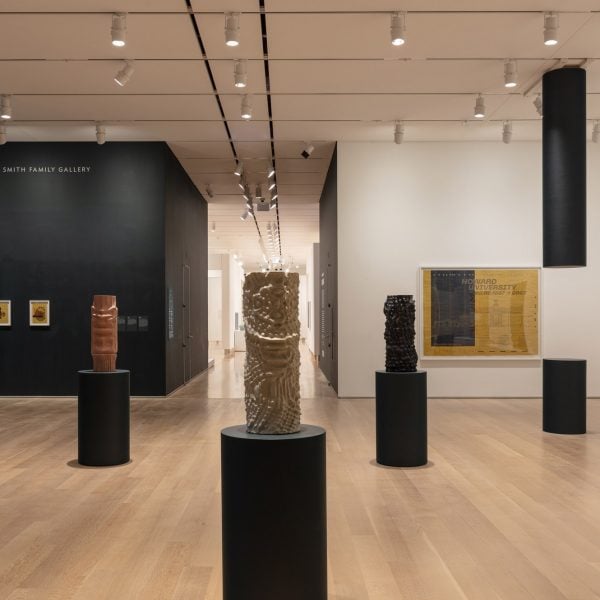American architect Germane Barnes aims to illustrate aspects of the African Diaspora by reimagining the three classical columnar orders at her Columnar Disorder exhibition at the Art Institute of Chicago.
Named Columnar Disorder, the show comprises a series of models and drawings developed by Barnes around three aspects of the African experience during the Diaspora, especially concerning the slave trade that brought millions of people unwillingly to the United States and other colonies.
The work was informed by the centrality of the three classical columnar orders – Doric, Ionic and Corinthian – to architectural education and his experience of the erasure of African influence on classical architecture.
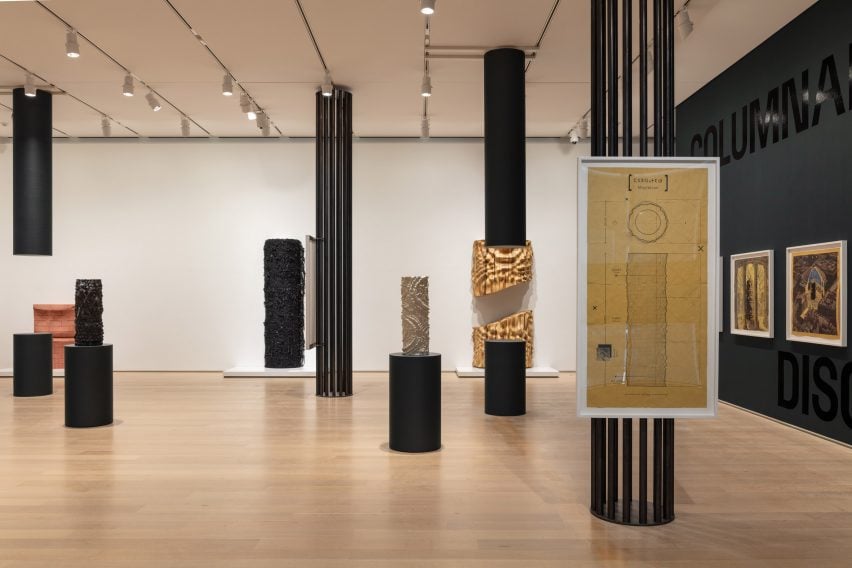
You have an education based on Western ideologies, like my undergrad and graduate architecture school work, where they never started with Egypt,” Barnes told Dezeen. “We always start with Vitruvius.”
“And so my idea was to create disorder in a field that always represents itself in a certain way, even if representation is not entirely true to the actual history of those components,” he continued.
Barnes said he wanted to redesign the columns around three new orders – migration, labour and identity – to provide “alternative histories” through the lens of basic architectural components.
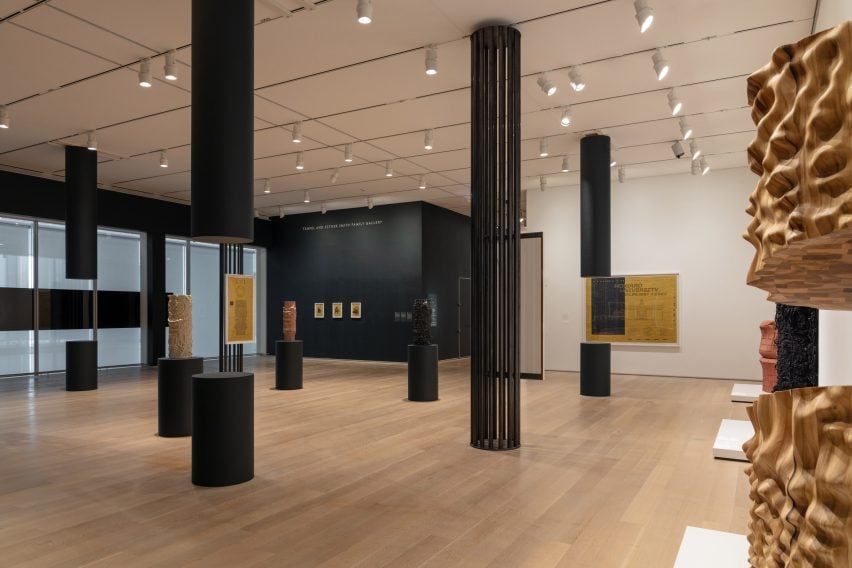
Each of the different orders is represented through multiple modes in the exhibition. Barnes included life-sized portions of columns that show the proposed materials of the columns, as well as scale models to show their entirety.
In the life-sized column portion, each uses a different material to illustrate the concept.
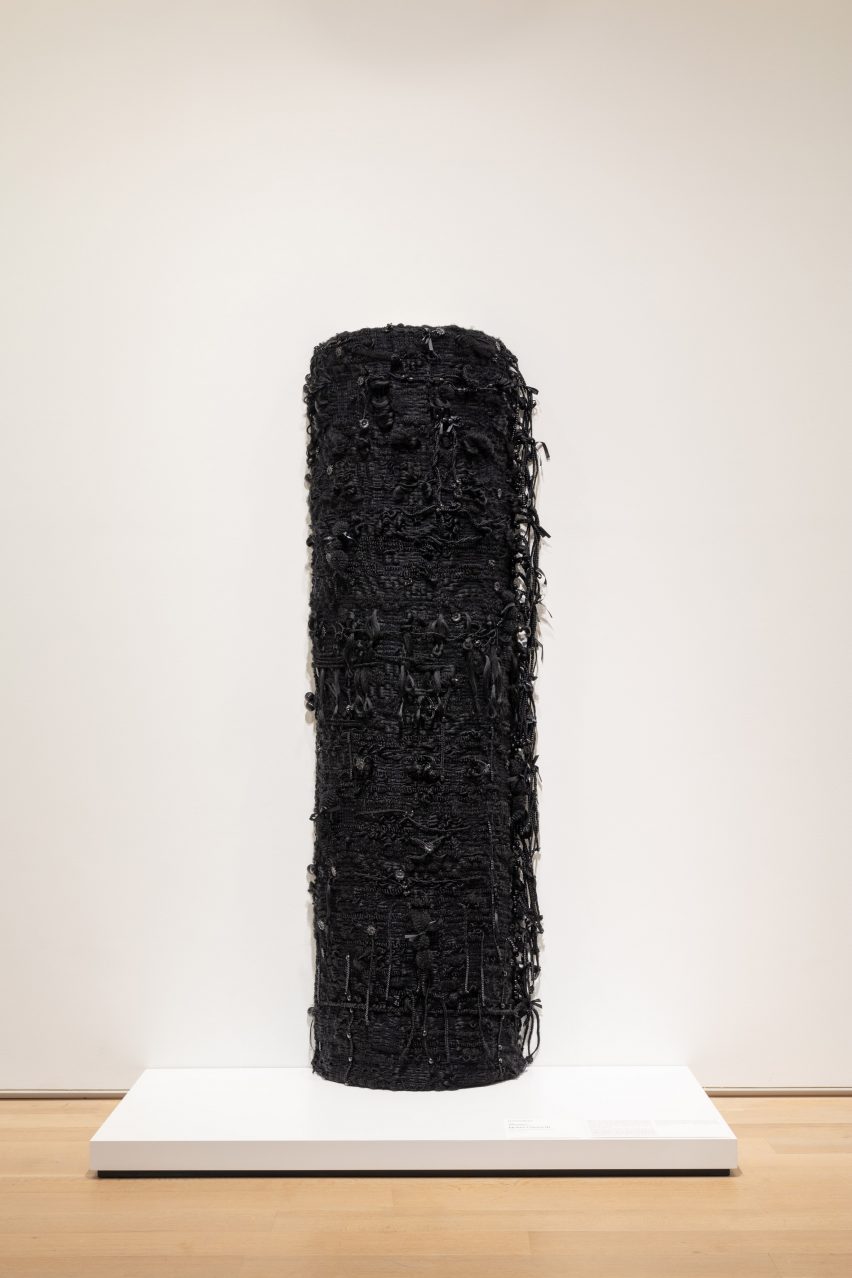
The Migration Column, for example, was rendered in poplar wood carved to resemble waves with a break in the middle to represent the severed lives of familial lines and culture due to slavery and expropriation.
Meanwhile, the Identity Column was covered in braided synthetic hair, created in collaboration with local hair artist Shenequa.
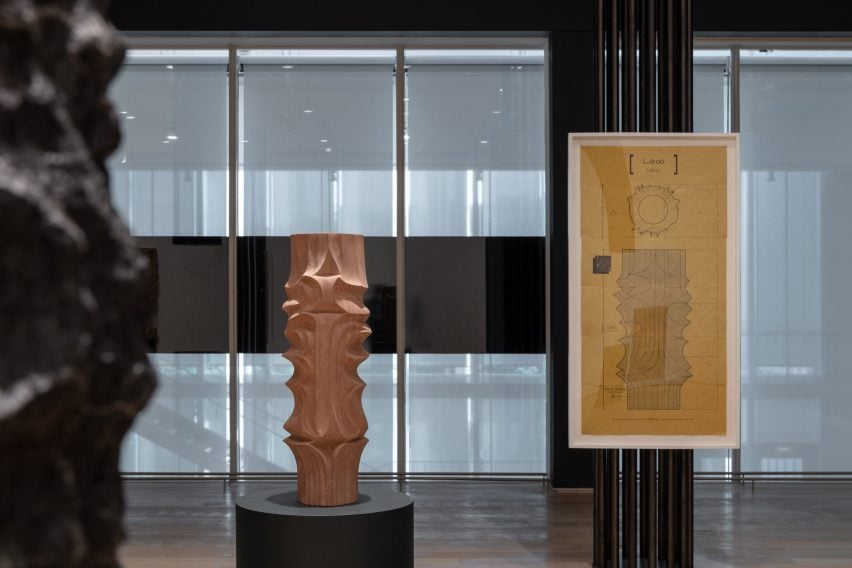
The Labour Column was rendered in brick with the help of local bricklayers to represent the unacknowledged slave labour that went into the construction of the built environment in the United States.
“My approach features expansion as opposed to removal,” Barnes said. “You can’t change what’s happened in history – it’s history – but you can tell the whole story.”
In addition to the materially focused works, Barnes also designed the exhibition itself, with a series of sleek black columns and pedestals, many with the same break found in the Migration Column.
On the walls are drawings where Barnes’ columns have been drawn in place of the actual columns on classical buildings, developed with the Lab of the Future at Howard University.
Barnes, who received the Rome Prize in Architecture in 2021, showcased versions of the work for at the 2021 Venice Architecture Biennale.
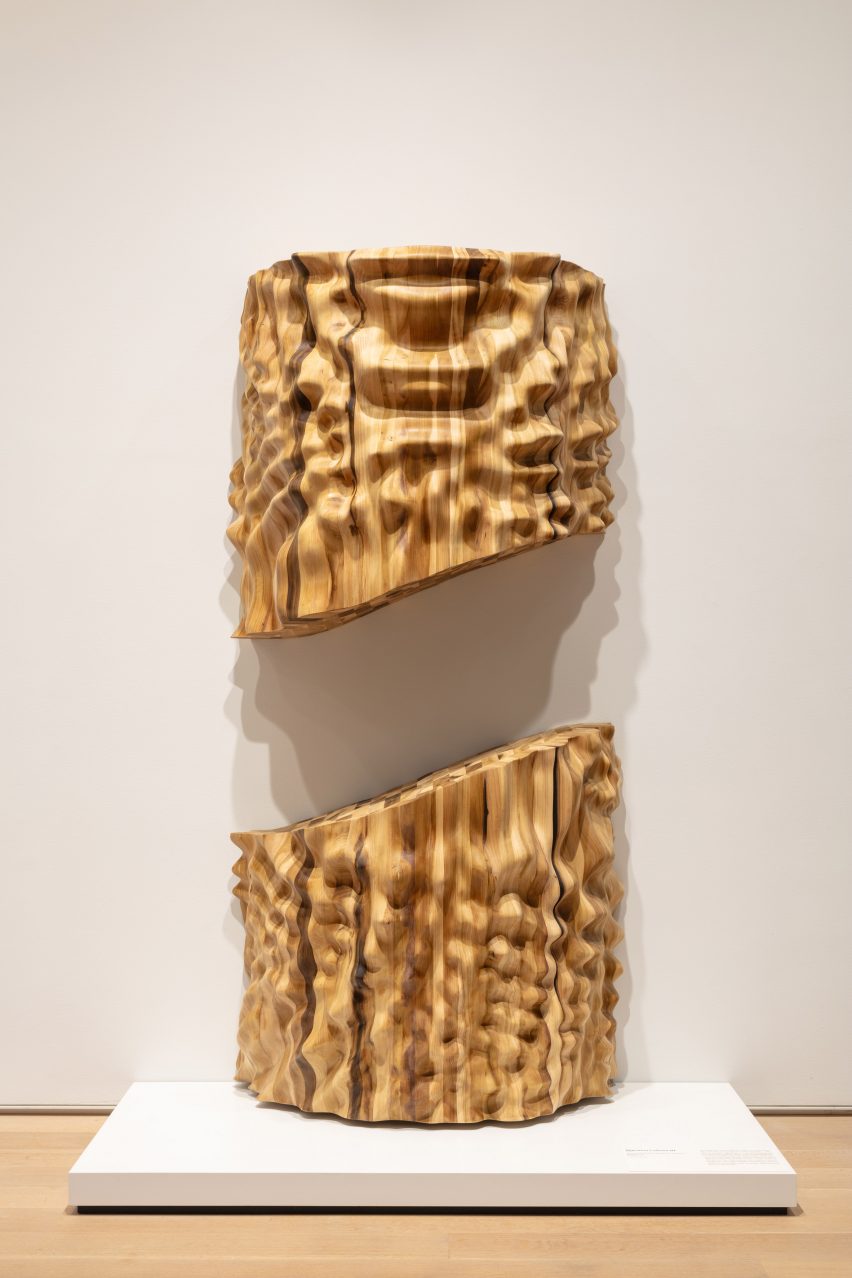
Columnar Disorder is his first solo museum show and was organised by the institute’s curator of architecture and design, Irene Sunwoo.
“The exhibition serves as a testament to Barnes’ ambition to radically transform the field,” said Sunwoo.
Previous work by Barnes includes a wire-frame model of a Lexus vehicle for Design Miami in Florida.
The photography is courtesy of Germane Barnes.
Columnar Disorder is on show at the Art Institute of Chicago from 21 September 2024 to 27 January 2025. For more exhibitions, talks and fairs in architecture and design visit Dezeen Events Guide.

